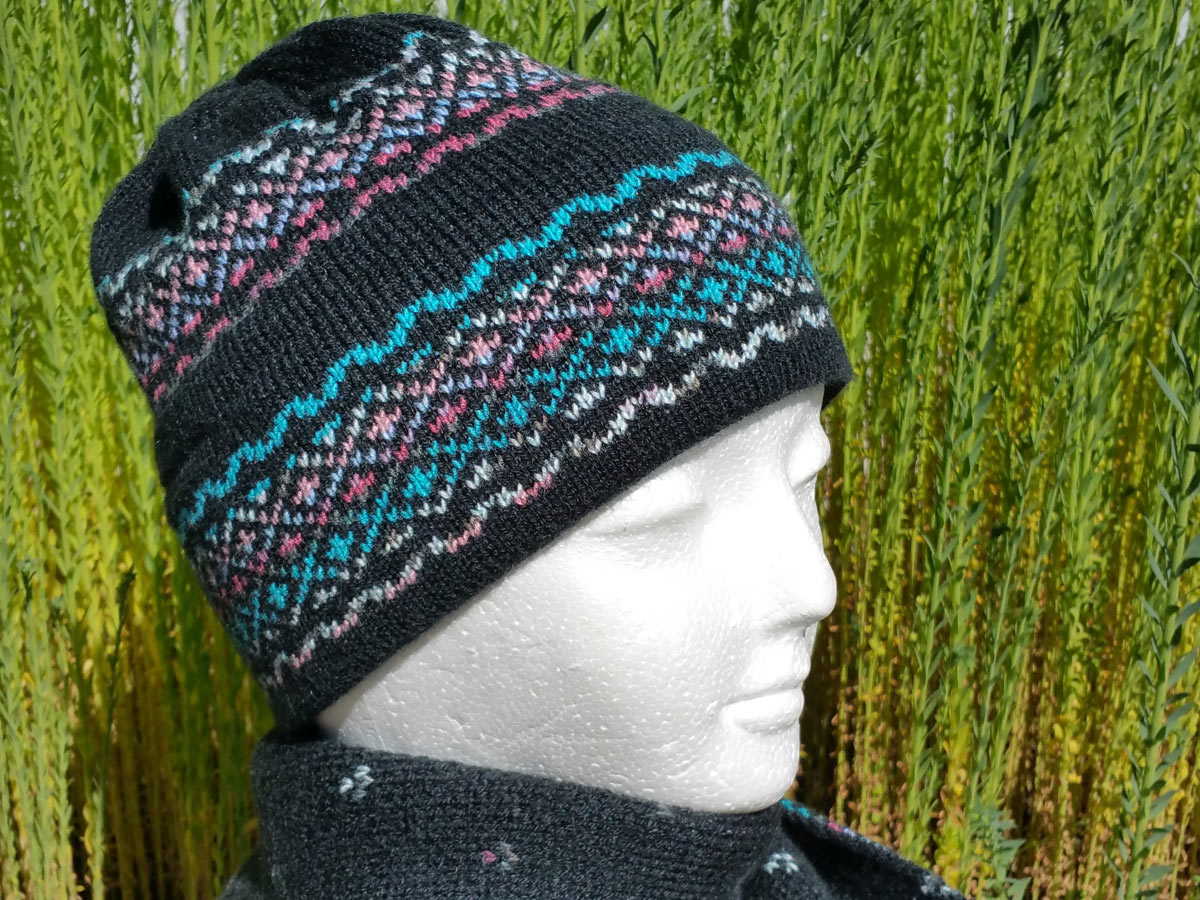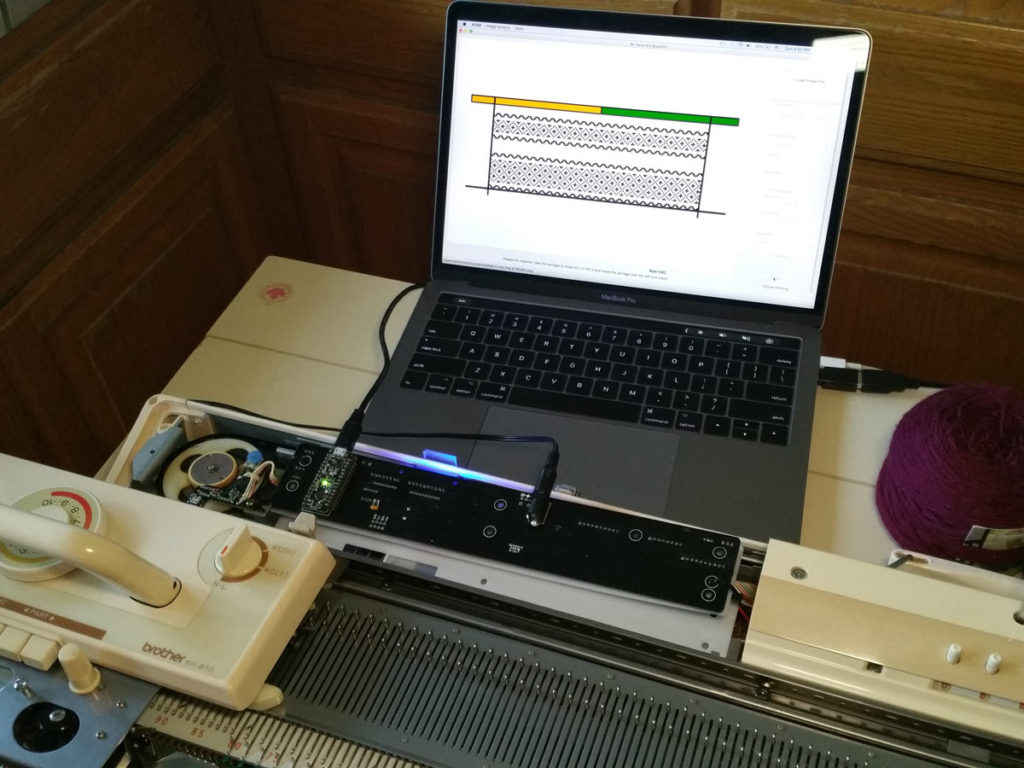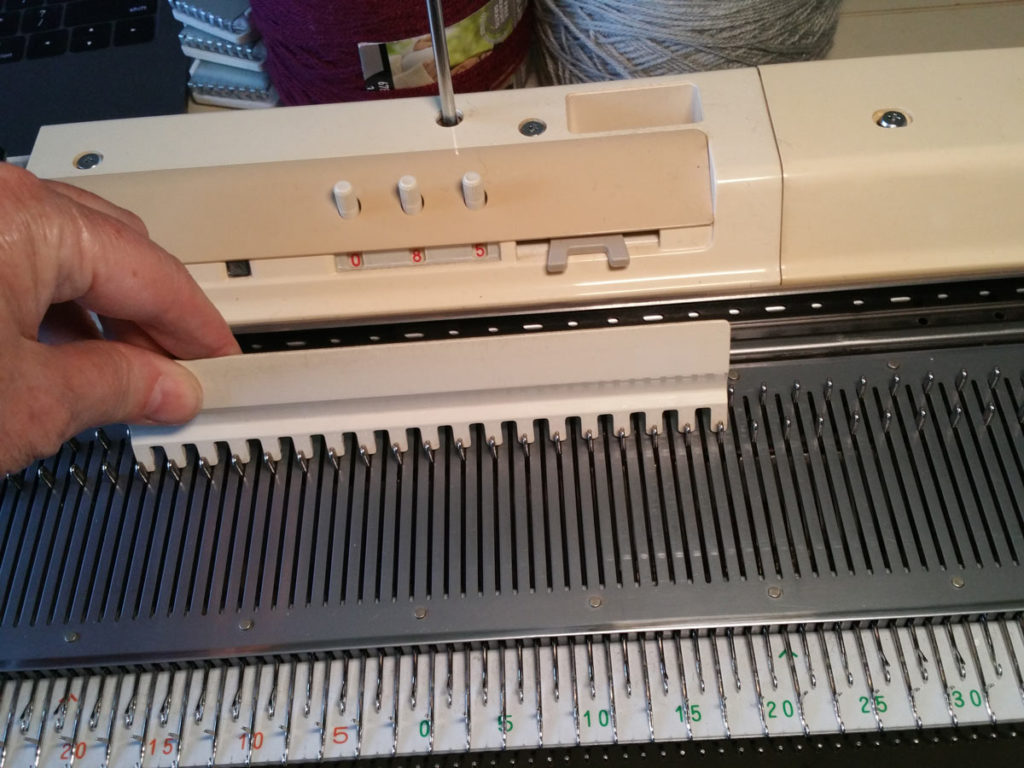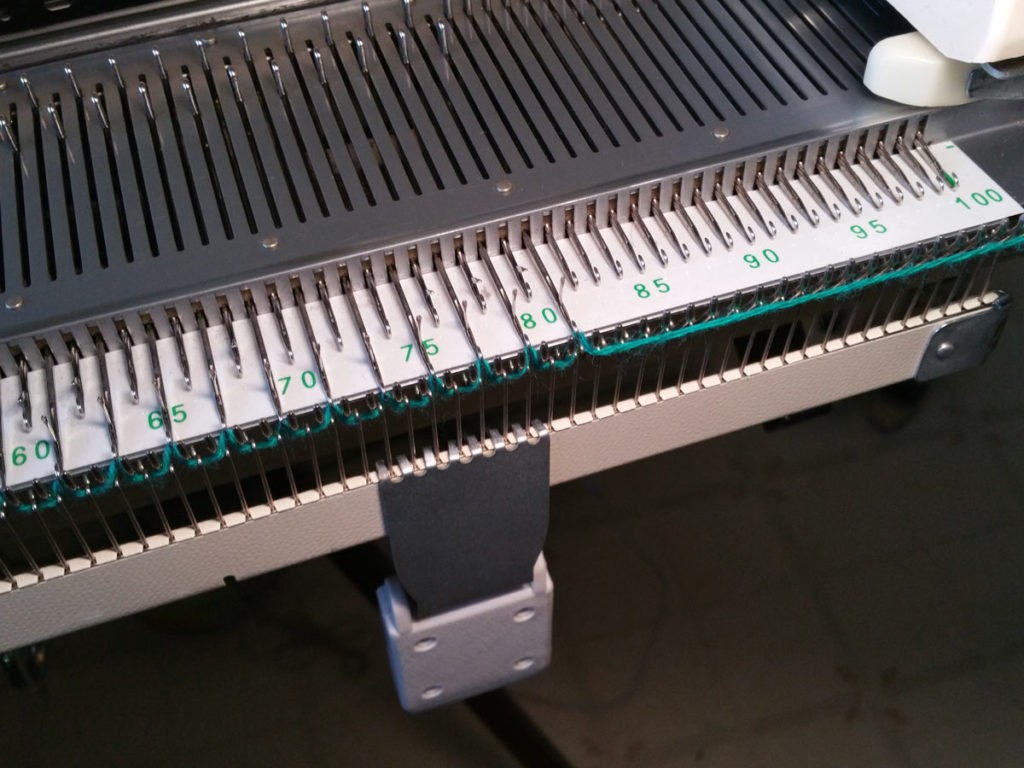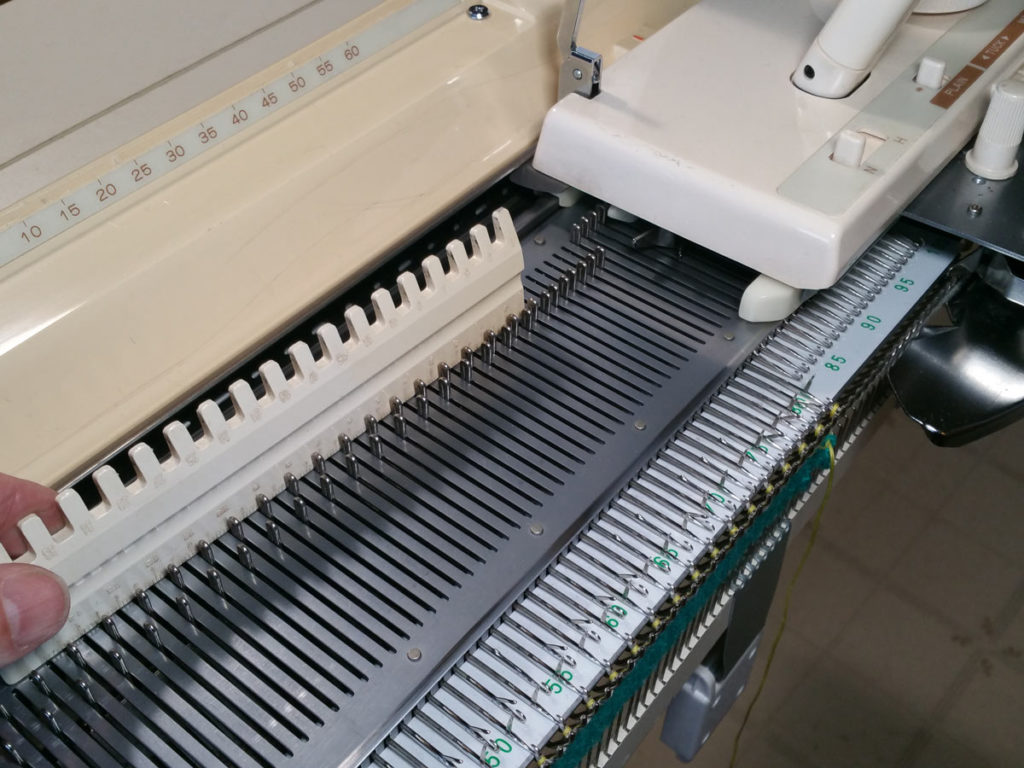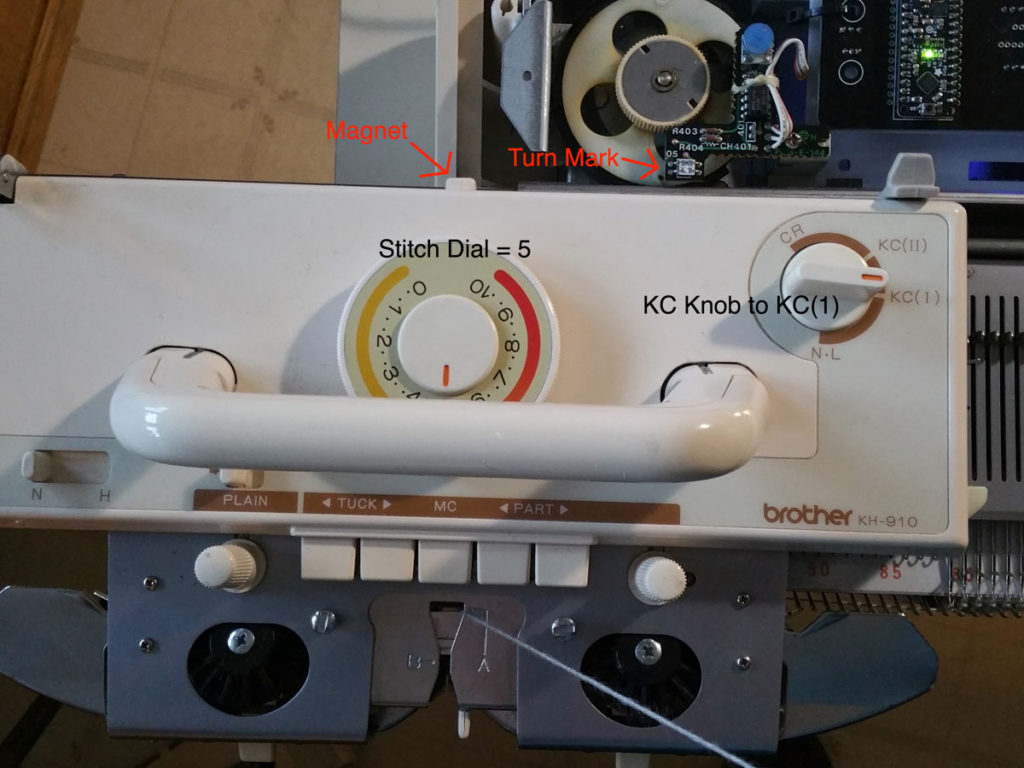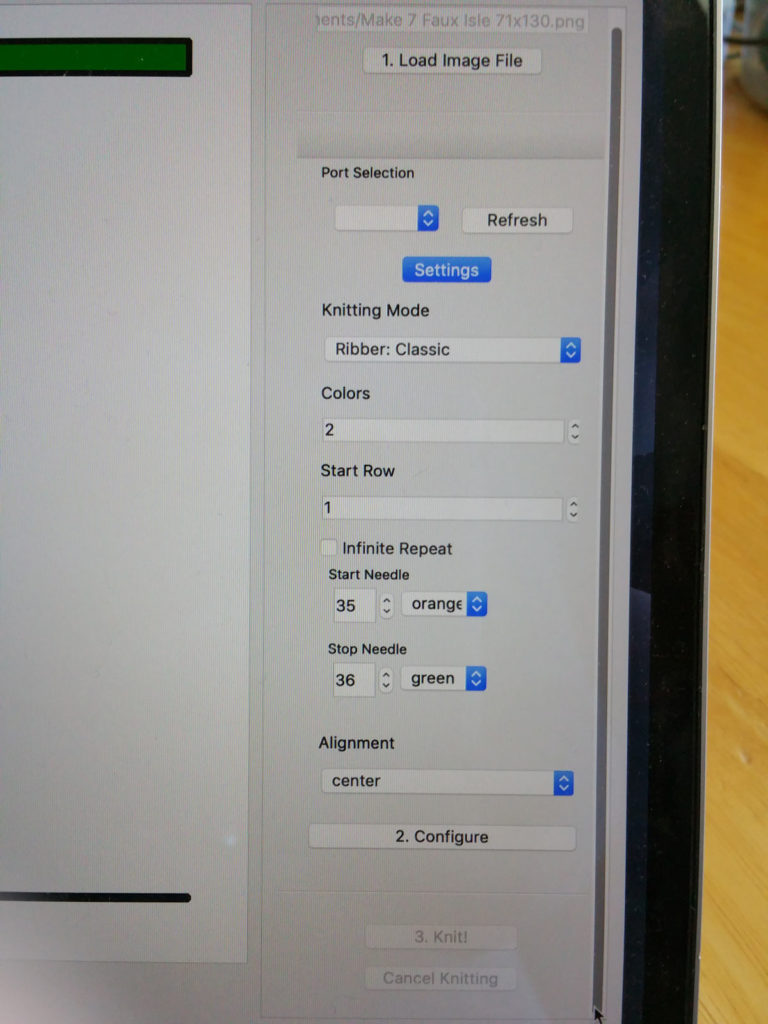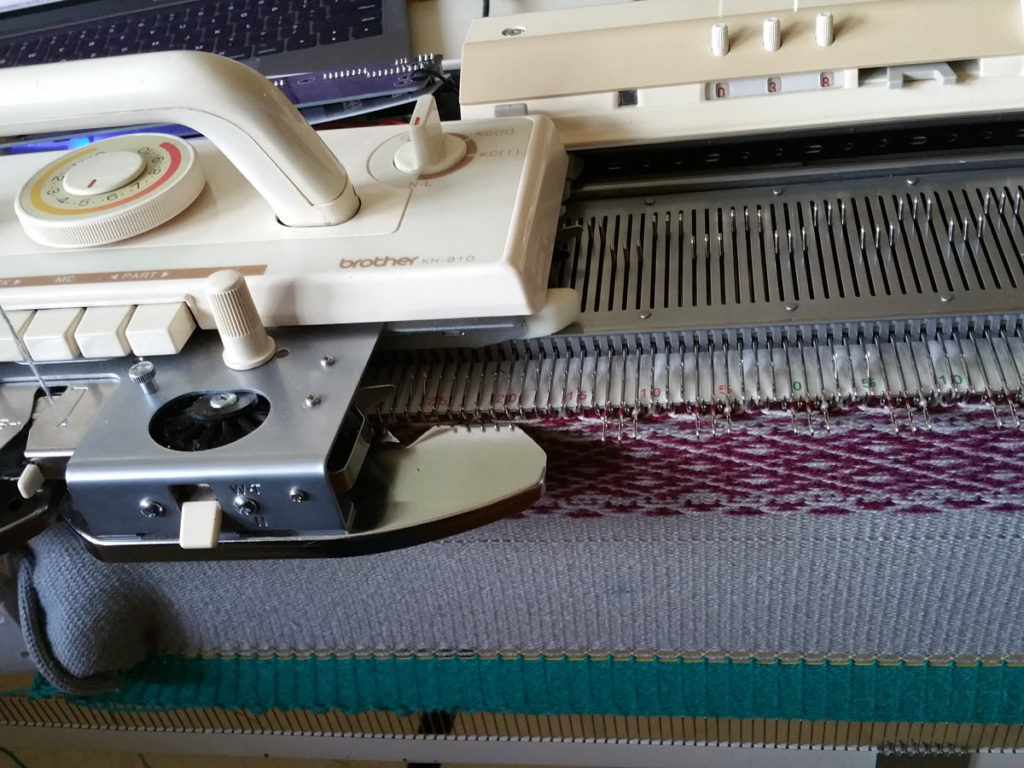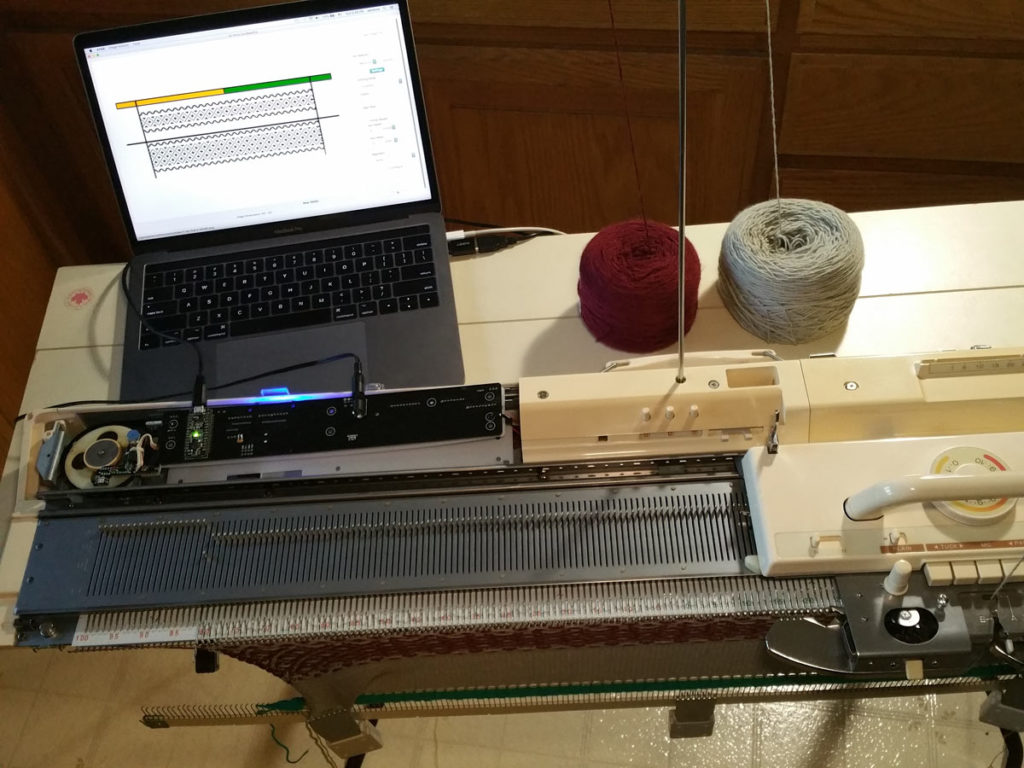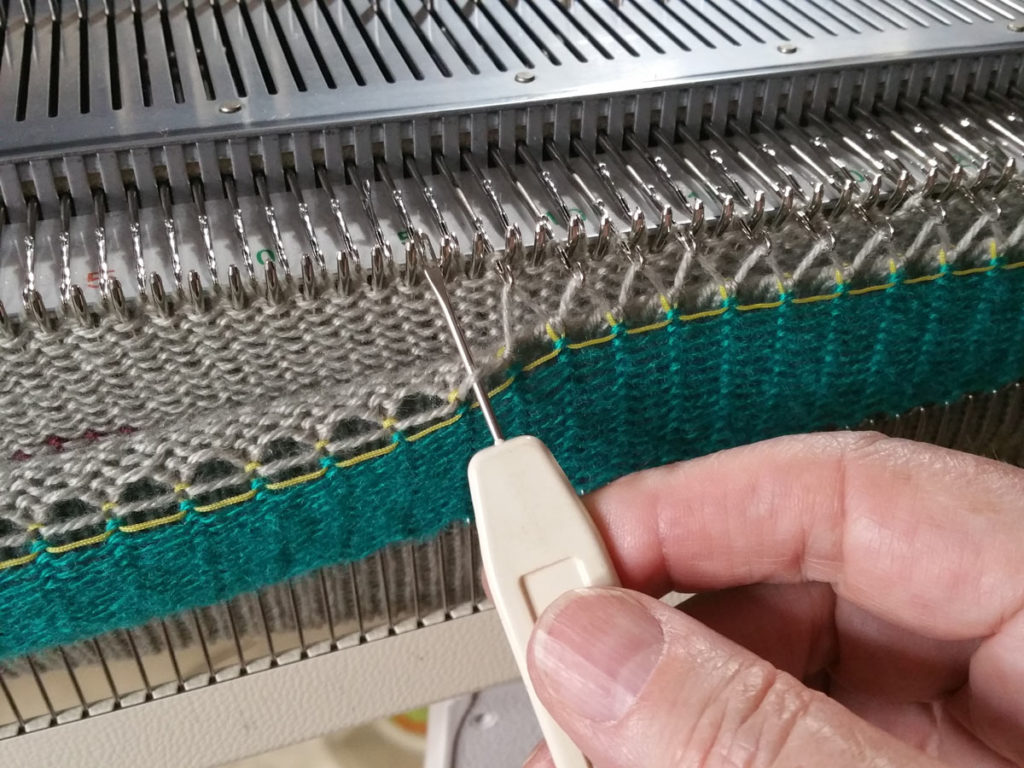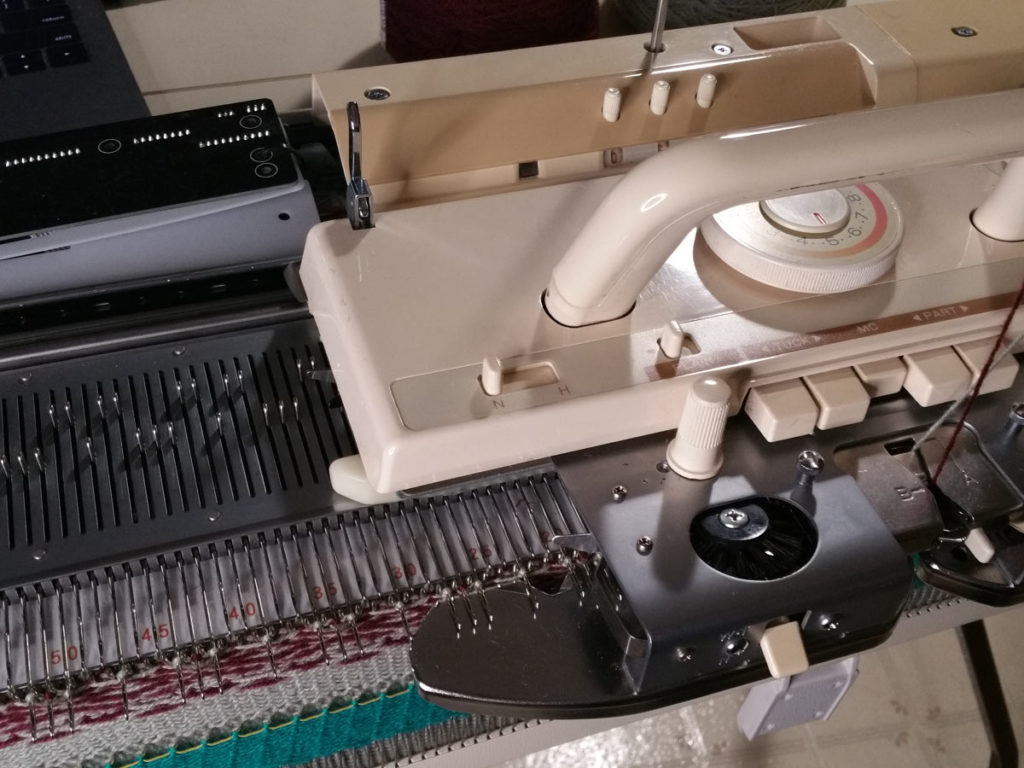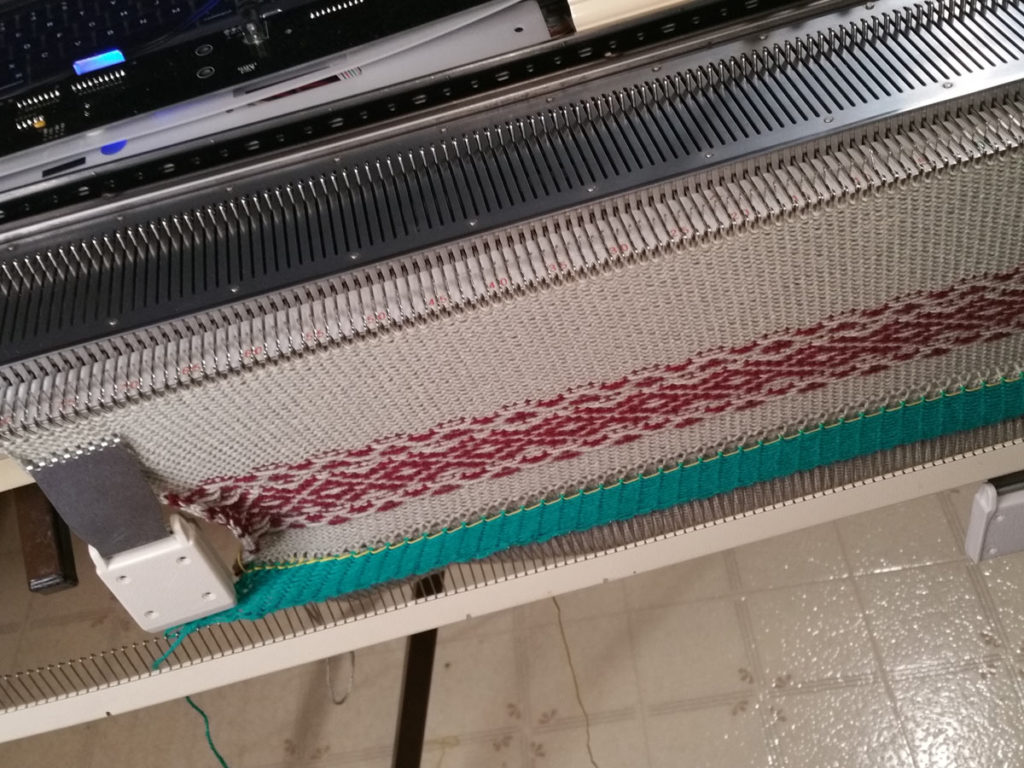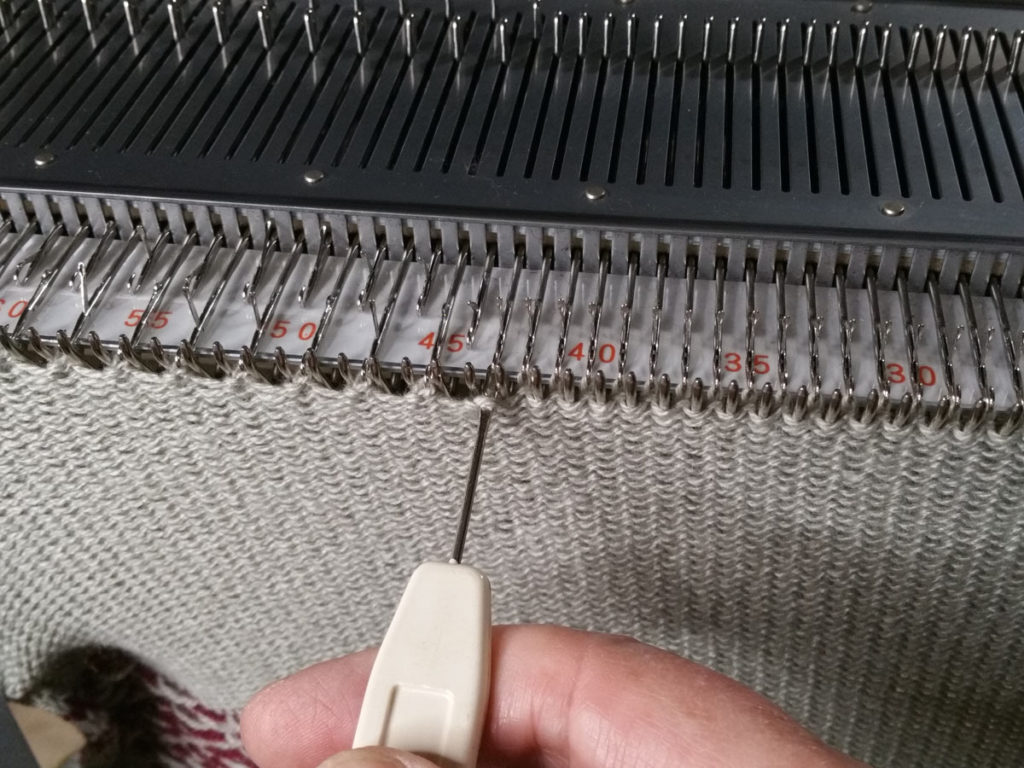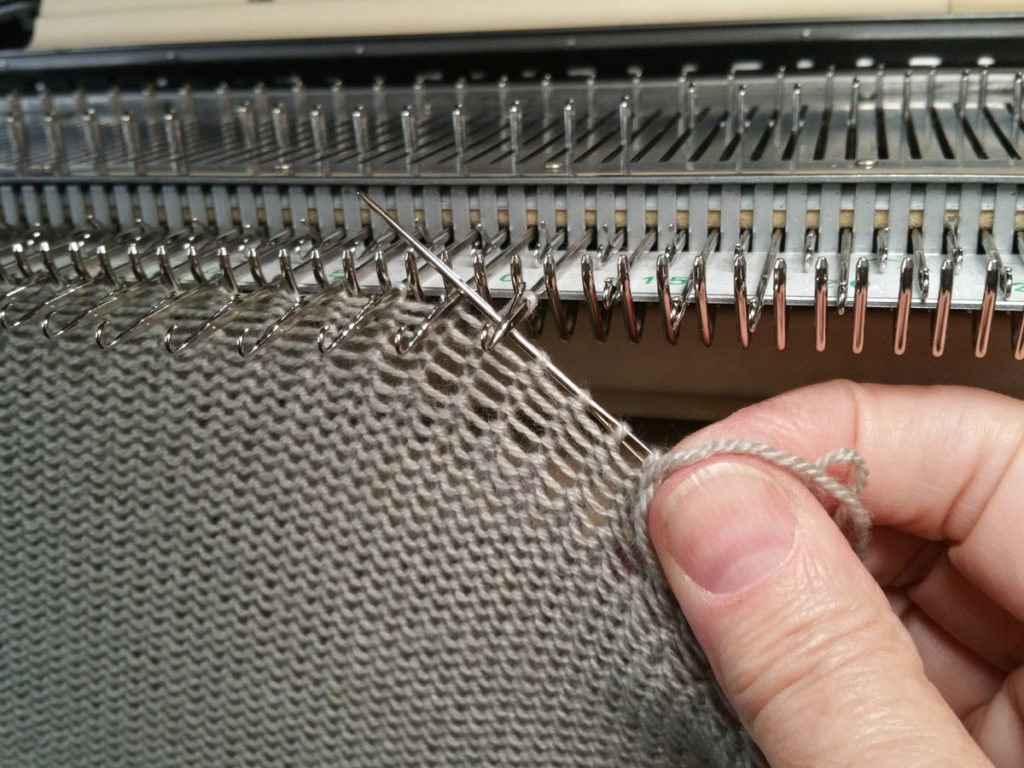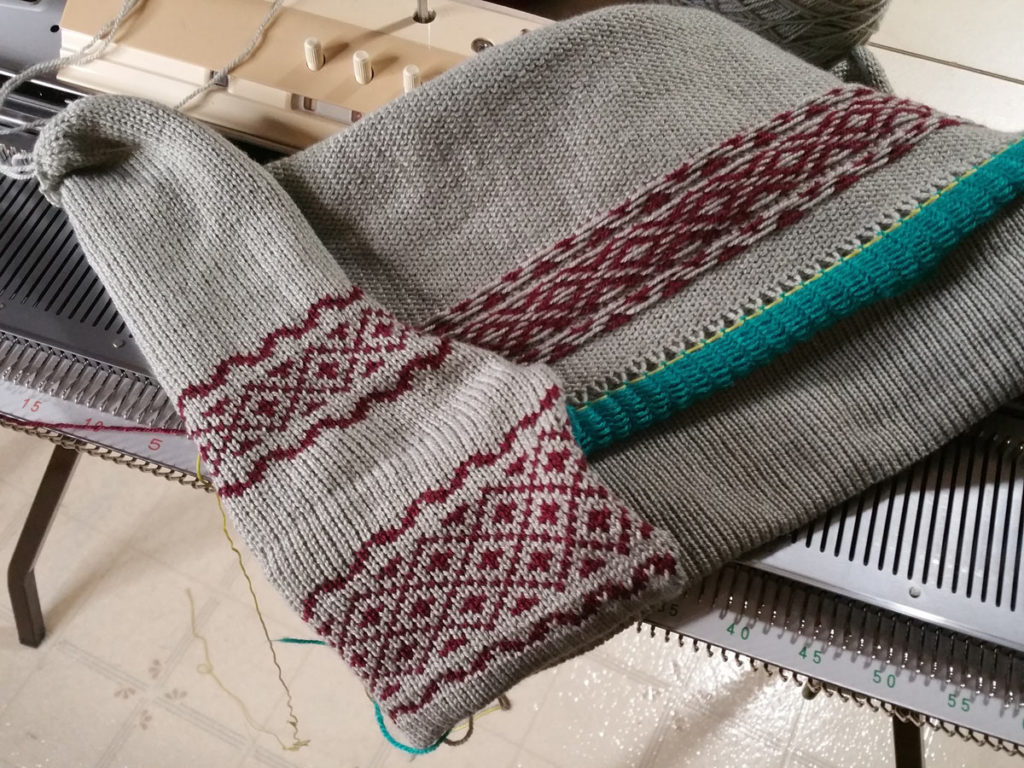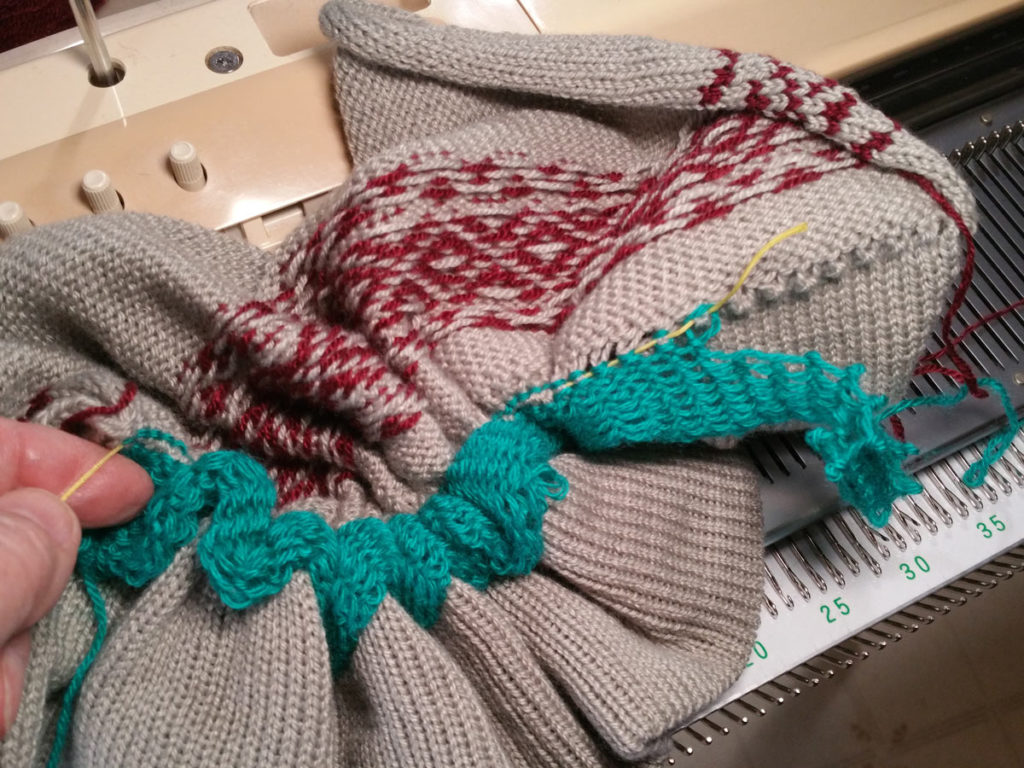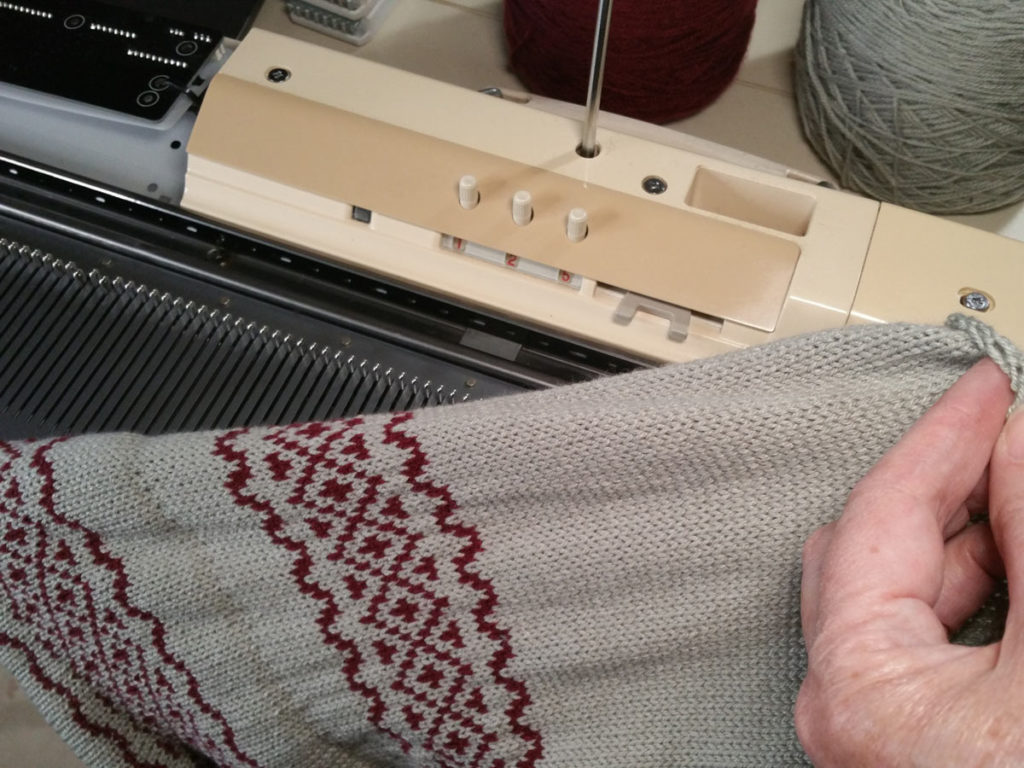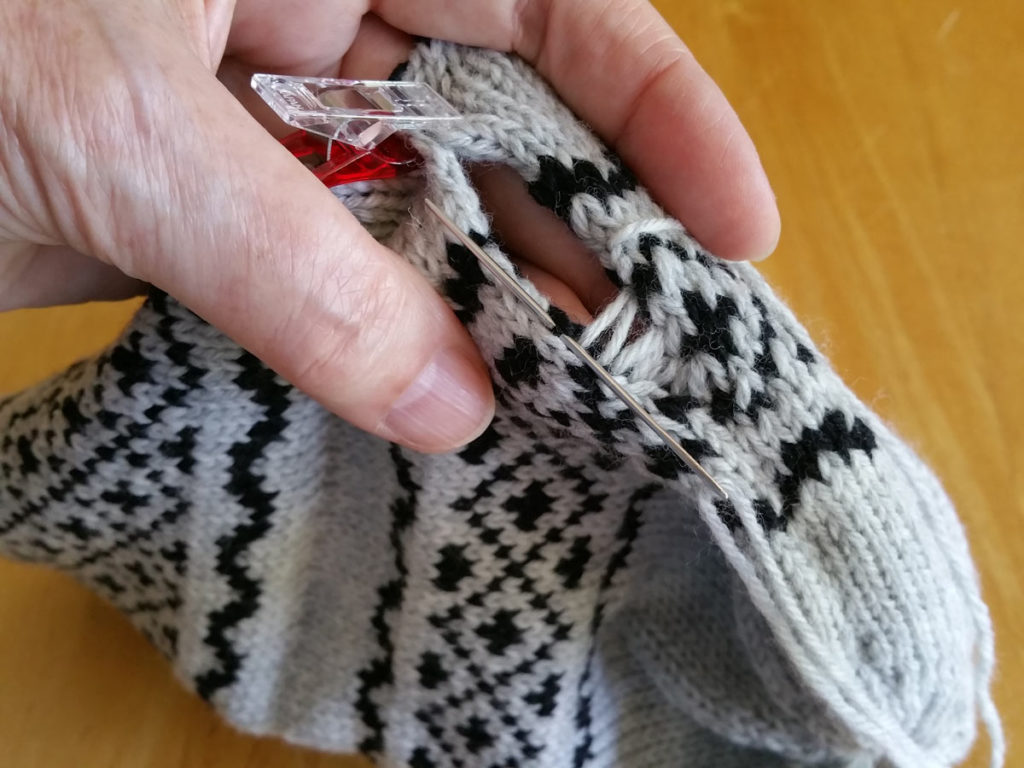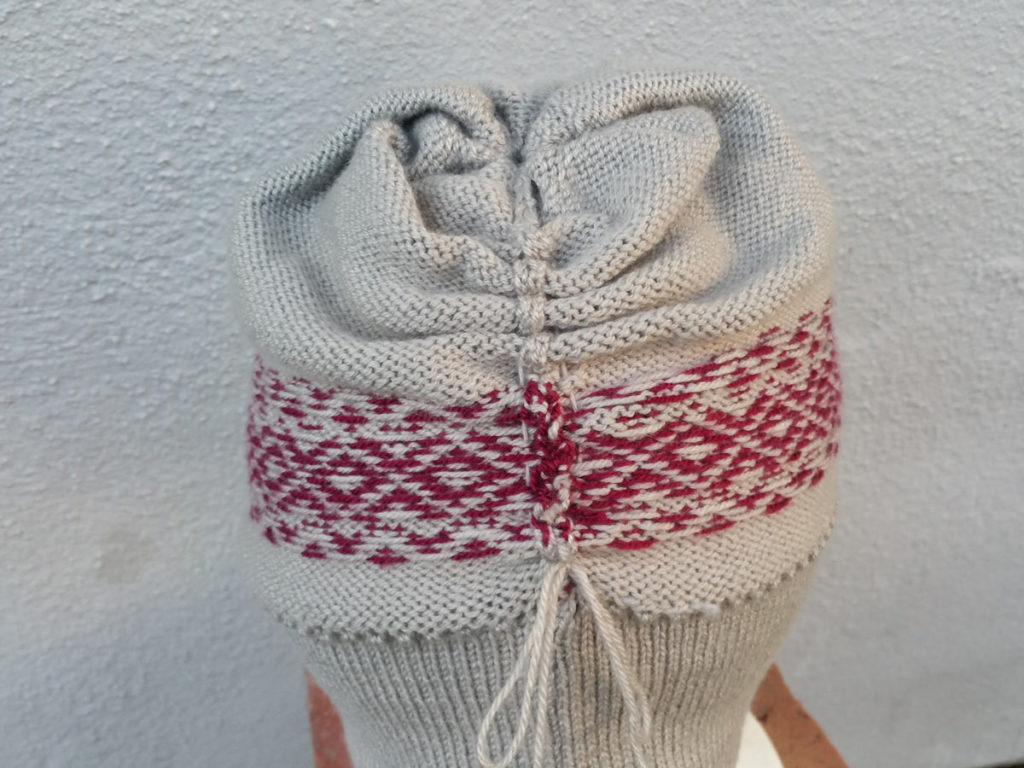
This project is a companion to the Skill Builder article “Pixel Knitting” all about hacked knitting machines, featured in Make: Vol. 77. Pick up a copy or subscribe today for more great articles and projects.
Here’s a great early project for your hacked knitting machine. No ribber required for this one, the hat has a deep double layer hem. The top is slightly shaped by reducing the number of stitches by half, so the gathers at the top are not too bulky.
The hat is knitted as a single strand on the single bed machine. It makes a fairly lightweight fabric — this won’t be the warmest hat you’ve ever owned — but you can make a warmer version by using a heavier yarn (see Materials below).
The article in Make: Vol. 77 describes two different ways to hack these 1980s Brother knitting machines. The All Yarns Are Beautiful (AYAB) hack (ayab-knitting.com) is shown here; you could make the same project with img2track as well — only the part about downloading the pattern and starting to knit it is different.
We’re starting after you have installed the AYAB hack and checked that it works. And we’re assuming that your knitting machine is in reasonable working condition, and has had a fresh sponge bar installed.
The steps are spelled out in detail, with the new machine-knitter in mind. As with any new skill these steps may initially seem daunting but will soon become second nature. Photos show the gray version, because black doesn’t show well in photographs.
You can also read about about installing and using AYAB in my Make: Project entry for knitting a puppet.



GAUGE: 32sts × 40 rows at dial setting T5.
MEASUREMENTS: The sample fits an adult head 58cm or 22.75″, measured horizontally just above the eyebrows. The mannequin head is about 20.5″ and without a wig it’s a little bit loose on her. For a smaller size remove 8 stitches and the main pattern will still line up at the seam.

Abbreviations (also defined when first used):
- COL — Carriage on Left
- COR — Carriage on Right
- RC=000 — Set the row counter to zero
- T5 — Set the Tension dial (Stitch Size dial) to 5
For your first try, you could follow the whole set of instructions but on only 50 needles, L25–R25. This will be your combined gauge swatch and practice piece.

Before you start, wind your yarn into a cake (Figure B). Or you can prop the ball of yarn vertically and pull from the middle.



